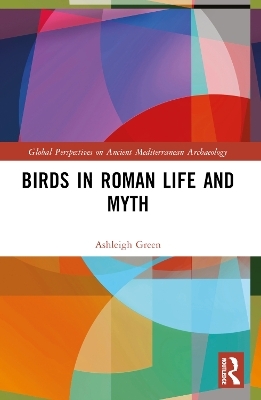
Birds in Roman Life and Myth
Seiten
2024
Routledge (Verlag)
978-1-032-16289-8 (ISBN)
Routledge (Verlag)
978-1-032-16289-8 (ISBN)
This book examines birds in Roman life and myth, focusing primarily on the transitional period of 100 BCE to 100 CE within the Italian peninsula.
This book explores the place of birds in Roman myth and everyday life, focusing primarily on the transitional period of 100 BCE to 100 CE within the Italian peninsula.
A diverse range of topics is considered in order to build a broad overview of the subject. Beginning with an appraisal of omens, augury, and auspices – including the ‘sacred chickens’ consulted by generals before battle – it goes on to examine how Romans farmed birds, hunted them, and kept them as pets. It demonstrates how the ownership and consumption of birds were used to communicate status and prestige, and how bird consumption mirrored wider economic and social trends. Each topic adopts an interdisciplinary approach, considering literary evidence alongside art, material culture, zooarchaeology, and modern ornithological knowledge. The inclusion of zooarchaeology adds another dimension to the work and highlights the value of using animals and faunal remains to interpret the past.
Studying the Roman view of birds offers great insight into how they conceived of their relationship with the gods and how they stratified and organised their society. This book is a valuable resource for bird lovers and researchers alike, particularly those studying animals in the ancient world.
This book explores the place of birds in Roman myth and everyday life, focusing primarily on the transitional period of 100 BCE to 100 CE within the Italian peninsula.
A diverse range of topics is considered in order to build a broad overview of the subject. Beginning with an appraisal of omens, augury, and auspices – including the ‘sacred chickens’ consulted by generals before battle – it goes on to examine how Romans farmed birds, hunted them, and kept them as pets. It demonstrates how the ownership and consumption of birds were used to communicate status and prestige, and how bird consumption mirrored wider economic and social trends. Each topic adopts an interdisciplinary approach, considering literary evidence alongside art, material culture, zooarchaeology, and modern ornithological knowledge. The inclusion of zooarchaeology adds another dimension to the work and highlights the value of using animals and faunal remains to interpret the past.
Studying the Roman view of birds offers great insight into how they conceived of their relationship with the gods and how they stratified and organised their society. This book is a valuable resource for bird lovers and researchers alike, particularly those studying animals in the ancient world.
Dr Ashleigh Green is a graduate of The University of Melbourne and a fellow of the State Library of Victoria. Her research interests include the study of birds in the classical world, and more generally what human-animal studies can tell us about societies both past and present. She was the 2021 recipient of the Australasian Society for Classical Studies Early Career Award and a 2022 Virtual Fellow for the Centre for the History of Emotions.
Introduction; 1. Omens, Augury, and Auspices; 2. The Augural Chickens; 3.Farming and Aviculture; 4. Fowling and Bird-Catching; 5. Pets and Pleasure
| Erscheinungsdatum | 16.03.2023 |
|---|---|
| Reihe/Serie | Global Perspectives on Ancient Mediterranean Archaeology |
| Zusatzinfo | 3 Line drawings, black and white; 43 Halftones, black and white; 46 Illustrations, black and white |
| Verlagsort | London |
| Sprache | englisch |
| Maße | 156 x 234 mm |
| Gewicht | 460 g |
| Themenwelt | Sachbuch/Ratgeber ► Natur / Technik ► Naturführer |
| Geisteswissenschaften ► Archäologie | |
| ISBN-10 | 1-032-16289-9 / 1032162899 |
| ISBN-13 | 978-1-032-16289-8 / 9781032162898 |
| Zustand | Neuware |
| Informationen gemäß Produktsicherheitsverordnung (GPSR) | |
| Haben Sie eine Frage zum Produkt? |
Mehr entdecken
aus dem Bereich
aus dem Bereich
Buch | Hardcover (2019)
Quelle & Meyer (Verlag)
CHF 55,90
Botanik, Ethnopharmakologie und Anwendung
Buch | Hardcover (2022)
at Verlag
CHF 160,00


